Ciao Tutti
I am coming to you live from the island of Stromboli, off the coast of Sicily, Italy. Amazingly, there are no cars here and the volcano is always active.
You are receiving this email because you joined my mailing list at some point. Welcome to the Apt. 2 Bread substack.
Right now it is 1:27pm and hot. So hot you can’t really be outside during the day, best to save that for the morning and evening. On my to-do list for this week there are a few tasks, but one that stands out:
Plan bake
I find myself missing baking quite a bit. I haven’t touched dough in almost a month and even then I was only staging for an afternoon with a kind baker in Tricaso Porto, Puglia — Riccardo Serafino of Taverna del Porto. While baking the electricity went out. We were both sweating profusely and laughing. One thing Riccardo does that I thought was amazing — he makes a sourdough “cream”. So before the mix he whips his starter in a mixer with the whisk attachment for… 20-30 minutes, to help with the rise in the bread. Really cool. Big hug to Riccardo!
But here, the heat is stifling… I can’t turn on the oven. Instead I am seeking a stovetop solution.
This is one of my favorite parts of baking, or rather the way that I bake, which is: firstly I feel inspired and decide what I want to make (often something I haven’t before). Then I do a little research and handwrite a recipe. This part is important, because it’s the point where I really grasp the process.
During the mix I almost always use the same tried-and-true fermentation timing (30min to 1hour autolyse, 2 to 4 folds over two hours, 2 hour bulk fermentation, divide, shape, retard). Sometimes I’ll put the dough in the fridge before the divide if I don’t have the time — depending on what it is, focaccia for example can handle this. Another favorite part — knowing the dough well enough to create space for oneself within the process.
And so, inspired by my recent time in Bologna, where I was a student of Italian language for two weeks, I have made Piadina, a flatbread originating from the Romagna region. Perhaps more excitingly, I am using the flour I was gifted three weeks ago by the team at Cascina Lago Scuro, an incredible organic farm located near Cremona, Italy. They grow various grains, and lucky me — I left with a kilo of segale (rye) and a kilo of varietà miscuglio evolutivo (“evolutionary mixture variety”).
— — —
If you haven’t yet suspected, I am currently in the middle of a bread journey of sorts. My main objective on this adventure is to explore the ways others bake, with a particular interest in those baking from grain to bread. In general I am seeking to meet people that have a passion and respect for their work, the earth and our bodies. Luckily for me, Italy has a progressive movement in Slow Food, and so despite popular opinion there are many people making great bread here. My hope is to bring some of these practices back home.
In unison with bread studies, I’m also doing some personal introspective work. Highs and lows, really. In a moment of panic on the beach yesterday — feeling spent after days of solely communicating in the basic Italian, and at the start of ovulation — I felt super tired and scared about my future. I wrote the following questions:
How do I want to fill my days when I return?
Do I want to open a spot?
Do I want to work for someone else? (No)
Do I want to get a pt job to bring in a little money while I figure it out?
Do I want to keep traveling?
Despite what some might think, I don’t have it figured out.
— — —
I have shared below my Piadina recipe. I made the mistake of shaping these like pita, with the seam on the bottom, and so they puffed up and formed an interior pocket. Still delicious, but not really Piadina. And so next time I will turn the seam to the side before I roll them out. These are not traditional — with the addition of starter and rye flour, but I always bake with what I want (and you should too). Piadina can be thick and fluffy or thin — they are also made differently by region. I prefer fluffy cause I’m a bread slut!
Rye Piadina x 6 - total yield 756g - 126g each
225g room-temp water (78ish degrees if you’re temping, but feeling by hand is a great way to learn)
125g active 100% hydration starter
—
250g typo 0, all-purpose, or bread flour
150g segale (rye)
—
34g olive oil
9g salt
Mix the water and starter into a slurry. Add the flour and mix until fully incorporated. Allow rest (autolyse). After 30 minutes, mix in the salt and olive oil. Mix well, until the dough pulls away cleanly from the sides of the bowl. Move to a clean, lightly oiled bowl and cover. Perform 4 folds over the next 2 hours, every 30 minutes. Write out your mix schedule by hand, it will help. Allow to rest for 2 additional hours (bulk fermentation). After this you can either move to the fridge until the next day to develop some flavor, or you may divide and bake same-day. This is an easy, forgiving dough.
Divide the dough using a scale. For me this yielded (6) pieces at about 126g each. If you want smaller pieces, divide by (8). Roll each piece into a ball, and on a floured surface, use a rolling pin or flat glass bottle to roll each into a flat disc. Roll to your desired thickness. Per the note above, unless you want a pocketed flatbread, don’t orient the seam on the bottom when you roll out. But if you want a pocket — beautiful. Roll out with the seam oriented on the bottom. When intended it’s very satisfying to see the dough balloon into a pocket.
To bake, heat a skillet on medium heat with a small amount of olive oil. Bake each piadina for 2-3 minutes per side. Watch closely, you’ll know when they are done.
Once, a baker told me that baking bread is about confidence. The dough can feel hesitation. I’ve never forgotten that.
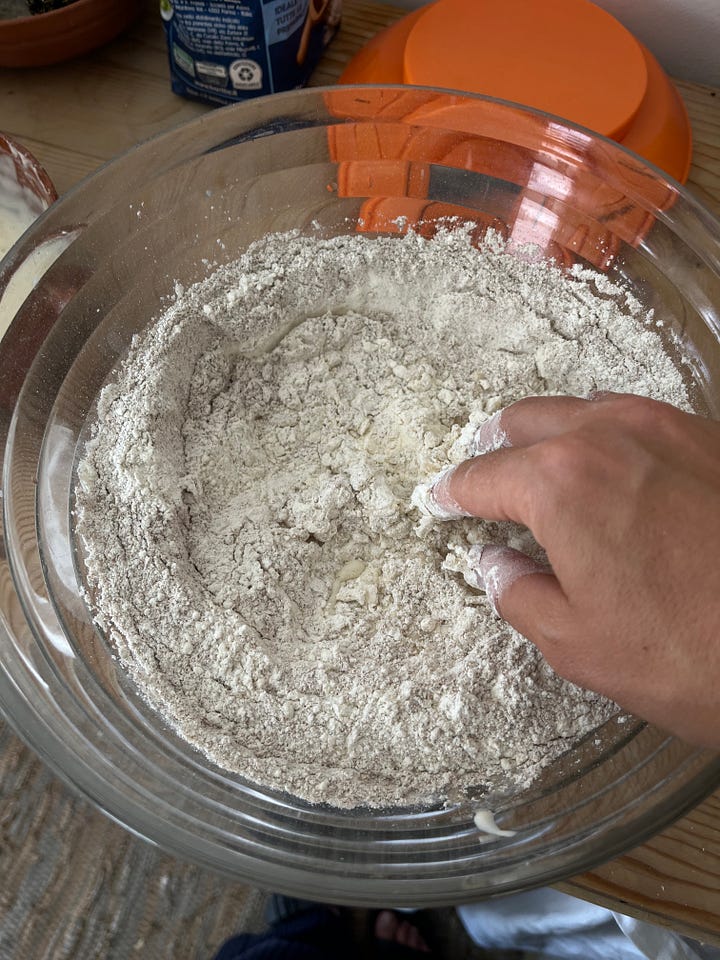
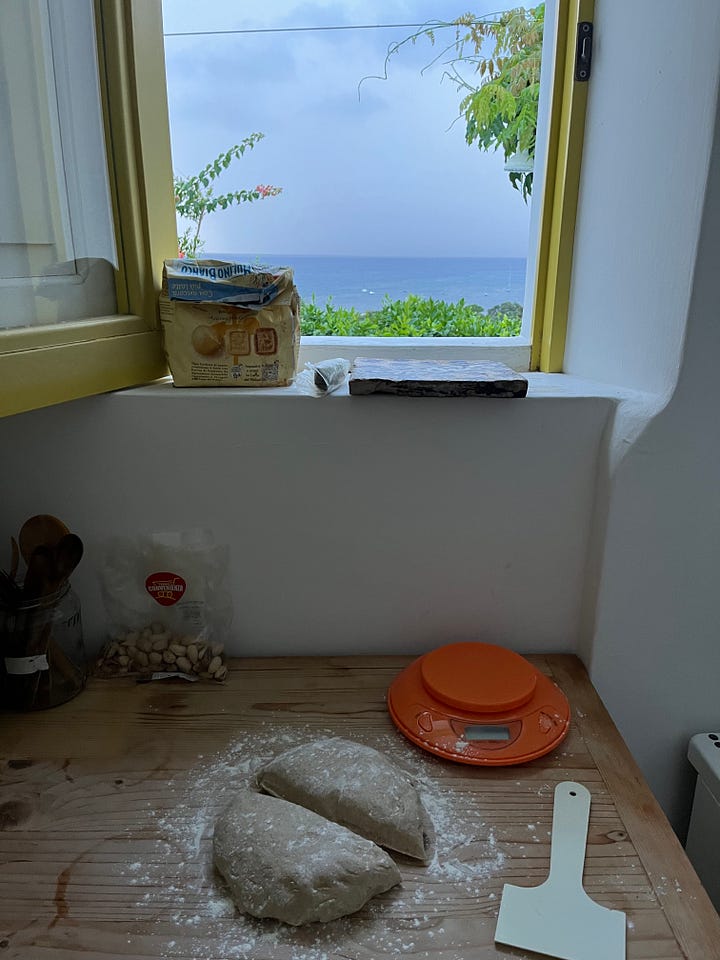
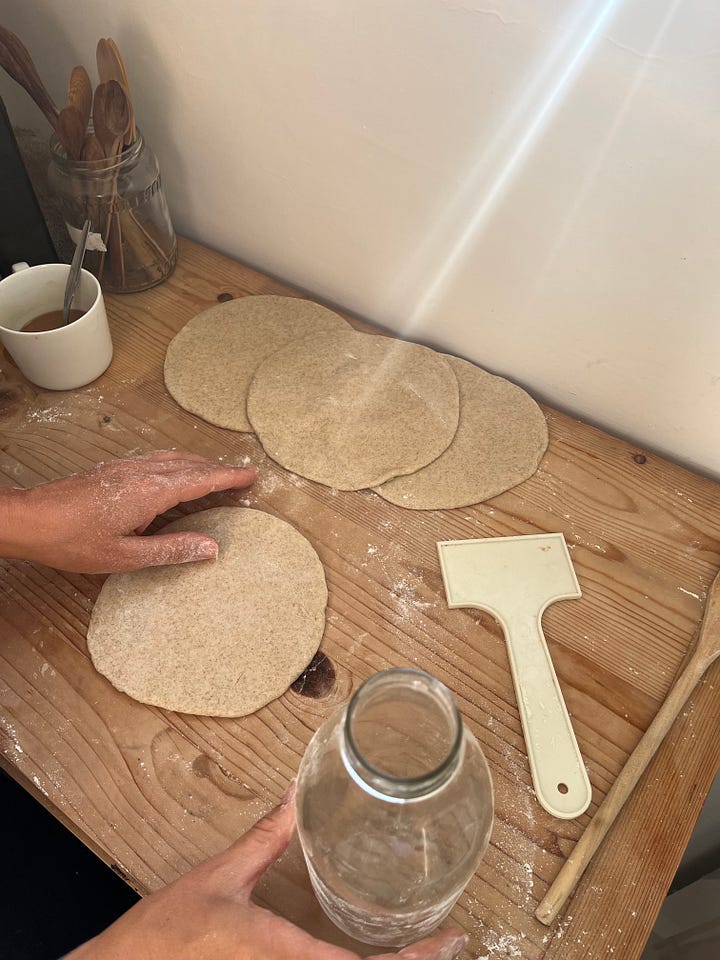
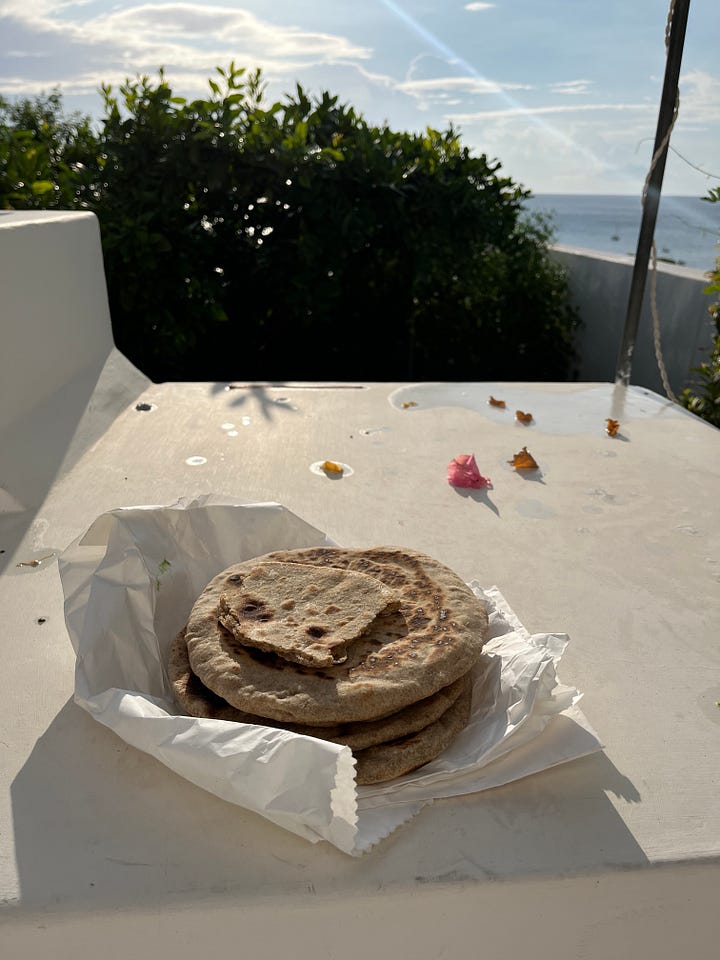
— — —
And so, I am here living the island life on Stromboli until Wednesday, totaling 18 days. I’m at a beautiful hostel (Casa del Sole) with kind people, living directly under the volcano, swimming in the clear sea everyday. L'energia è suggestivo. My friend taught me this word suggestivo — it means enchanting, spellbinding, timeless.
Next Saturday I will travel to a grain farm called Vild Hvede near Odense, Denmark. They harvest a number of grains and have their own mill and bakery onsite (!!!). I will stay for two weeks.
Going forward I will enable paid subscriptions for recipes. For $5 per month you can join this community and get an original recipe, either one inspired by my travels or a classic Apt. 2 Bread recipe. Cinnamon buns anyone?
Most of all these funds will support my journey. Thank you.
Hope you will stay tuned… I will write monthly.
Bread and life, one and the same.
C




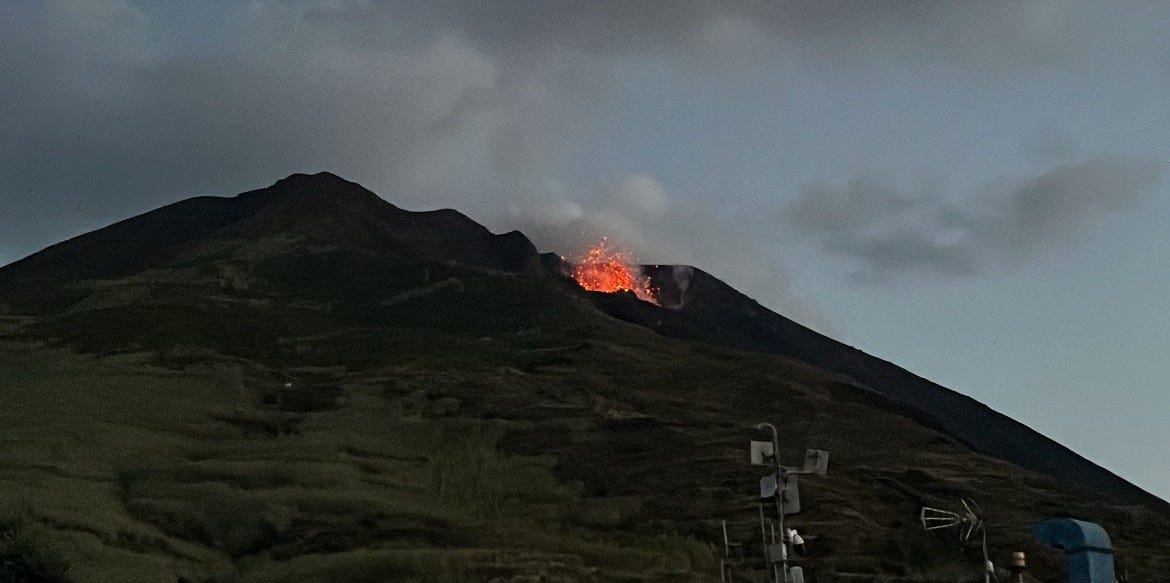
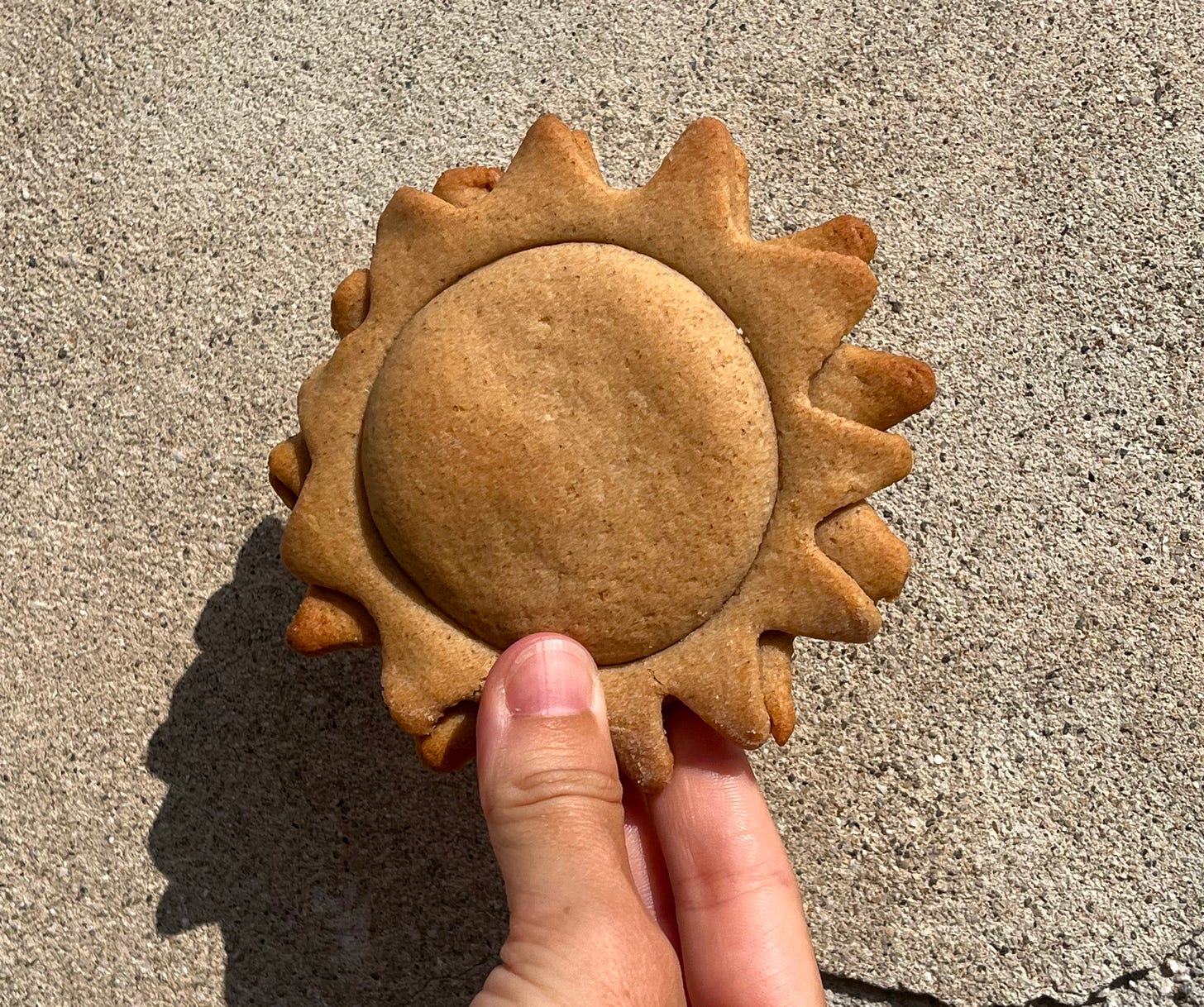
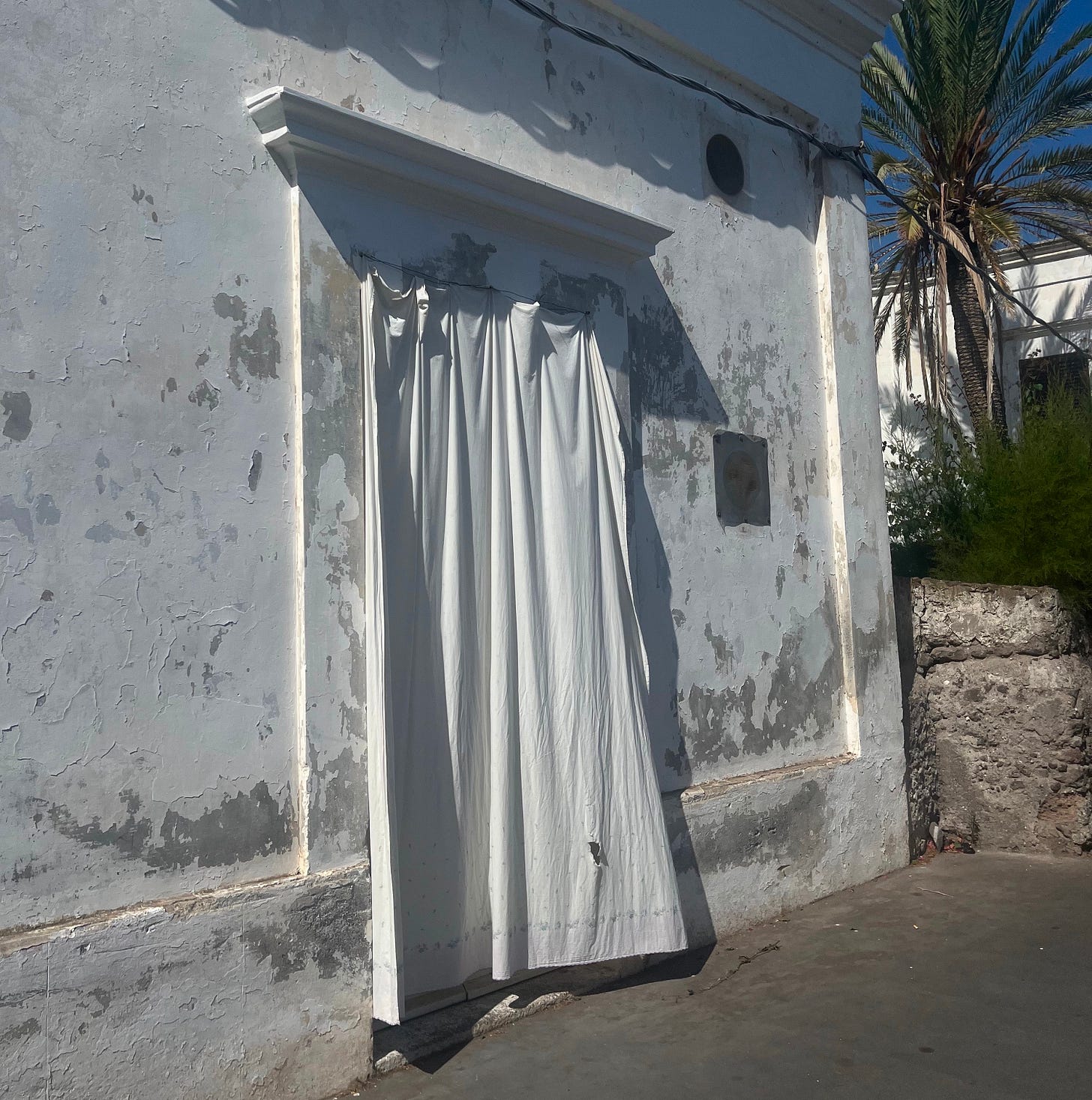
Love to read an update from ya <3 Been following on IG as well. Seriously obsessed and jealous of your life rn.
Proud of you - an incredible read!